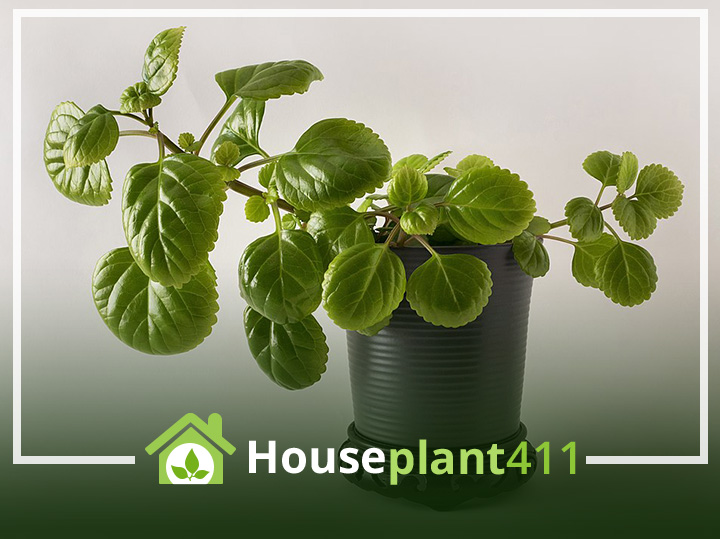Swedish ivy plants are a favorite among gardeners, homeowners, and plant enthusiasts. They’re easy to grow and maintain, don’t require much light or water, and thrive in most climates.
But did you know there are many different types of Swedish ivy plants?
Swedish Ivy (Plectranthus verticillatus) is a flowering perennial that can be grown as an annual or houseplant. The flowers are small and white, but this plant is so popular because it can easily grow on walls and trellises. It’s also one of the best plants for hanging baskets because it doesn’t need soil to grow—give it some water occasionally, and watch it grow!
If you’re looking for a Swedish ivy plant variety that will thrive in a particular environment and still look great, you’ve come to the right place!
Nico (P. Coleoides)
P. coleoides: This variety of Swedish Ivy is the most common in the United States and has dark green leaves with white variegation. It grows quickly, so it’s great for covering walls and fences quickly. The leaves are small but grow in clusters along stems around 4 feet long.
Plectranthus coleoides ‘Black Magic’: This cultivar has dark purple flowers on a slow-growing plant but is very hardy and easy to grow in most climates. It does best in full sun or partial shade with well-draining soil; if you’re using it as a groundcover around your house or garden beds, ensure plenty of room for this plant to spread out its roots!
Marginatus (P. Forsteri)
P. forsteri is a low-growing ivy with small leaves and a fast grower. This variety is considered one of the best ground covers for sunny areas due to its ability to spread quickly and cover bare soil with green foliage. It also works well as a border plant or in rock gardens where space is limited.
Swedish Ivy Plectranthus ‘Lemon Lime’
Swedish Ivy Plectranthus ‘Lemon Lime’ has lime green leaves with yellow veins running through them that look great year-round if you keep them indoors, where temperatures stay moderate throughout most seasons.
P. Tomentosa
P. tomentosa is a vigorous grower that can be used as a ground cover, as well as in containers and hanging baskets. It also makes an attractive houseplant, provided it receives plenty of indirect sunlight. As with all ivy varieties, this one needs moist but well-drained soil; if you don’t have access to outdoor space to water the plant regularly during hot summers, consider keeping it indoors instead.
Silver Spurflower (P.argentatus)
Plectranthus argentatus, also known as silver spurflower, is a perennial plant that originated in South Africa and Zimbabwe. The leaves are silver-white and have a shiny texture. The flowers are red and bloom from spring to early summer.
Tall Spurflower (Plectranthus Ecklonii)
Plectranthus ecklonii is a perennial plant that is native to South Africa. It belongs to the Lamiaceae family, which includes mints and other herbs. The plant has been used as an ornamental plant and is also known as Mother of Thousands due to its ability to propagate itself by stem cuttings.
Lacecap Ivy (Senecio Aureus)
The lacecap Ivy (Senecio aureus) is native to South Africa and can be grown in USDA zones 9-11. This variety grows as an annual or perennial, depending on your climate. It makes a great groundcover plant if you live in warmer climates and will thrive inside hanging baskets or containers if you live in cooler regions. The lacecap Ivy has yellow flowers that bloom from June through October.
Creeping Jenny (Lysimachia Nummularia)
Creeping Jenny is a perennial fern-like plant with small, oval leaves that grow to about 1/2 inch long. It can be grown in either full sun or partial shade, although it prefers some shade.
Creeping Jenny makes an excellent ground cover and border plant for beds or borders. It will also thrive in containers if given plenty of room for root expansion.
Takeaway
So, you want to get a houseplant but aren’t sure which one would be best for your new apartment. Swedish Ivy is an excellent choice because it’s easy to care for and looks beautiful in any room. However, there are many different varieties of this plant–and not all are created equal!
When choosing between different types of Swedish ivy plants, look for ones with thick leaves without any signs of yellowing or discoloration. You should also choose one with glossy green leaves rather than dull ones; this will indicate that it has been recently watered and is healthy enough to thrive in your home environment.

